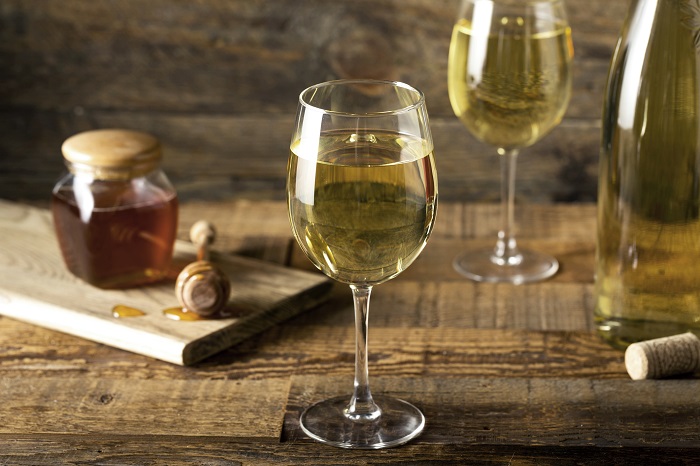Preservative-Free, Organic & Vegan Wines: What’s the Difference?
Don’t we all love drinking wine? Most of the days we can’t wait to go home and have a glass (or two) with dinner or just enjoy its taste while relaxing. Everyone’s either a white wine or a red wine person. There are so many different types with so many different tastes that’s hard to choose. But what should concern us more when picking a wine is how it’s made. What’s in it?
In this health and wellness obsessed age, you might have heard the terms “preservative-free”, “organic”, or “vegan” wine, but what’s the difference between all of these?

Source: nypost.com
Contents
What Makes Preservative-Free Wine Stand Out?
Every wine contains natural preservatives that are released during the fermentation of the grapes. But wine producers also use additional preservatives to keep their drink fresh for longer and to minimise oxidation. In other words, to extend the shelf life of their product.
The most common preservatives are sulphites or sulphur dioxide and this is what the grapes naturally release, but the problem is when there’s more added.
Some people are allergic or sensitive to sulphites and may experience headaches, stomach pain, swelling, skin irritation, and diarrhea, as well as irritation of the respiratory organs in those with asthma. Since many foods like dried food, juices, candy, and processed meat have sulphites, if you experience some kind of a symptom after consuming these, it means you’re sensitive to sulphites and you should avoid wines that contain them too.
In some countries and Australia, there are strict regulations when it comes to added sulphites, the bottle needs to say “Contains sulphites” or “Preservative (202)” but not every country has these regulations. You want to look for “preservative-free” labels or do research on the wine before buying.
White wines contain more preservatives because sulphite free white wine is harder to make. The grape skins for white wine are removed early in the process and the skins are important because they contain tannins that have sulphur dioxide. So, when there are sulphites already present, there’s no need to add much more. This is the reason why you should choose preservative free white wine.
Because preservative free white wine is harder to make and, in turn, harder to find, these are some of the common types of white wine that can be found without preservatives:
Sauvignon Blanc
These types of grapes produce dry white wines that are high in alcohol and low in acidity if created in warmer climates, like in Australia. There they develop more tropical notes and aromas of citrus, passion-fruit, and guava. In the colder climates, they tend to be with high acidity and a grassy note.
Vermentino
This is a great alternative to Sauvignon Blanc with high acidity and a more citrusy, bitter taste that comes from almonds, lime, and green apple.
Chardonnay
This grape variety is used for white wine and in warmer climates has the flavour of citrus, melon, and peach, while in cooler climates, the flavour is more acidic, with apple and pear notes. It can develop a taste of burnt caramel, vanilla, or butterscotch from oak, but if unoaked, it has fresher notes of citrus and apple.

Source: wine.lovetoknow.com
Which Wine Can Be Deemed Organic?
Just like many of us are turning to organic food and gardening as a better option for our health, switching to organic wine is of equal importance. Organic wine is a natural, healthier, and eco-friendly product that ensures there aren’t any artificial chemicals in the wine, soil, or vines.
To make it, the grapes are grown without pesticides, herbicides, or fungicides. To avoid toxins while still controlling the pests and unwanted weeds, organic winemakers find new ways or go back to nature for help.
For instance, they keep the vines off the ground because in this way it’s easier to reduce infestation and fungi. Sheep can eat the weeds and grass between the rows of vines. Larger insects are hand-picked and beneficial insects like lacewings, wasps, and ladybugs are released to feed on pests. And some pests can be removed with a strong stream of water. These are some of the methods that can be implemented to make the vineyard fight problems on its own and avoid the use of chemicals.
But this is only the first part of producing wine. In the phase of fermenting and preserving the wine, numerous non-organic preservatives can be added. So, if a wine bottle says that it’s produced with organically grown grapes, it doesn’t mean that there aren’t any preservatives.
Many countries allow organic wines to be produced with lower levels of sulphites. This being said, if you’re sensitive to sulphur dioxide and want to start using preservative free white wines, for example, organic wines wouldn’t be the best fit, although they’re healthier than non-organic ones. On this note, when buying wine always look for certification logos. In Australia specifically, the certification is mainly done by two bodies – Australian Certified Organic (ACO) or National Association for Sustainable Agriculture Australia (NASAA).
Organic wines may be more expensive than non-organic but this is understandable considering the additional difficulties that the winemakers face to produce high-quality, environmentally-friendly wine.

Source: medicalnewstoday.com
And What About Vegan Wine?
Since wine is made from grapes, most would assume it’s vegan, but this doesn’t have to be the case. Some techniques used during the making process can make it non-vegan.
At the end of the process of fermentation, the wine looks cloudy from different molecules that appeared. They’re not poisonous to consume but since the wine looks more appealing when clear, the molecules are extracted with fining agents. Many of these contain animal products like egg whites, milk or fish protein. Although they’re removed at the end of the fining process, small amounts can be absorbed, making the wine not vegan.
This is the reason why sometimes we can read on a bottle that it may contain traces of eggs or milk, but not all list the fining products that they use. These don’t affect the taste of the wine whatsoever, but if you want a vegan option, look for wines that state Vegan on the label, or the terms “not filtered” or “not fined” can be used.
Instead of animal-based fining products, other vegan products can be used like silica gel, clay, activated charcoal, limestone, and plant-based fining products.

















